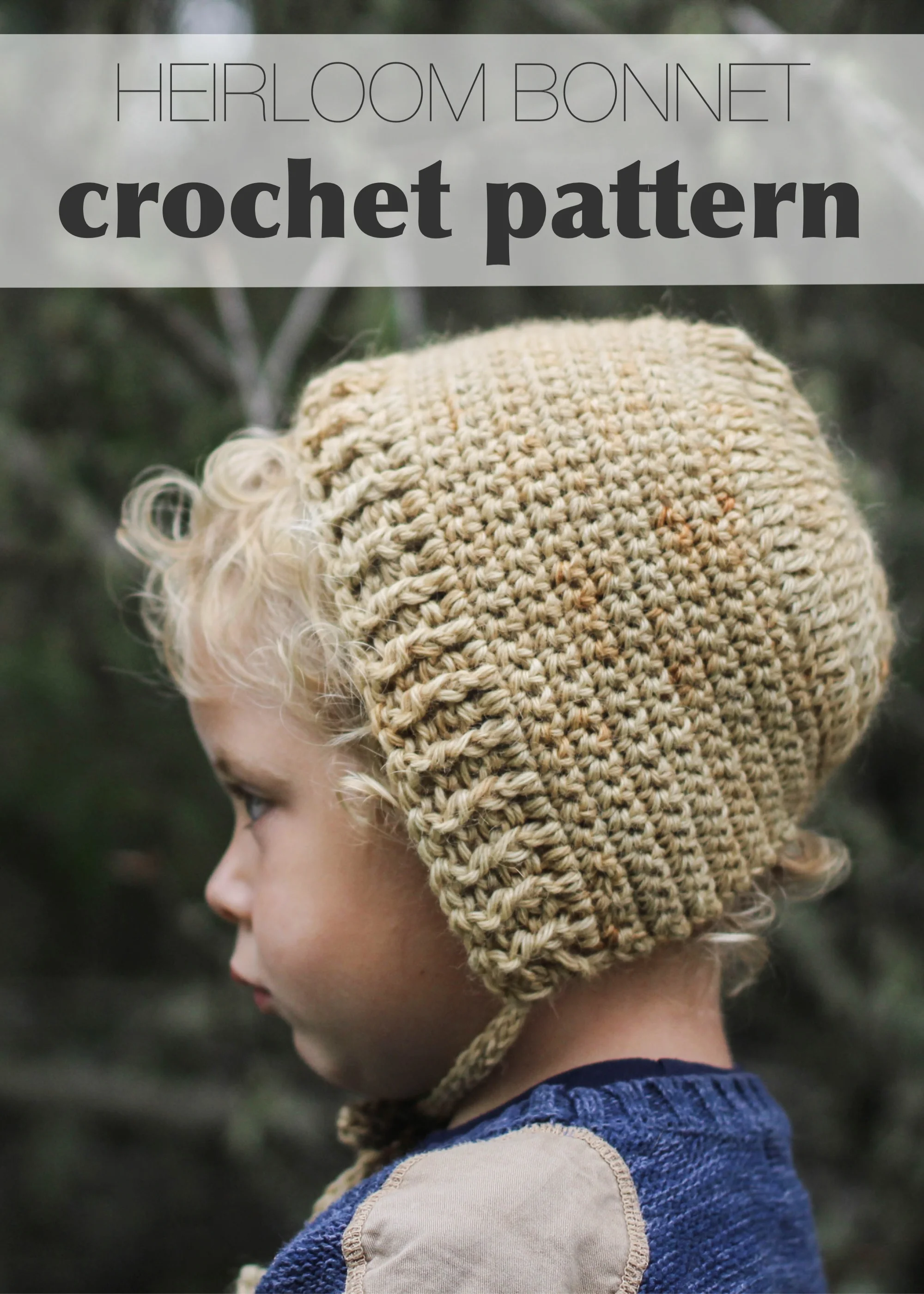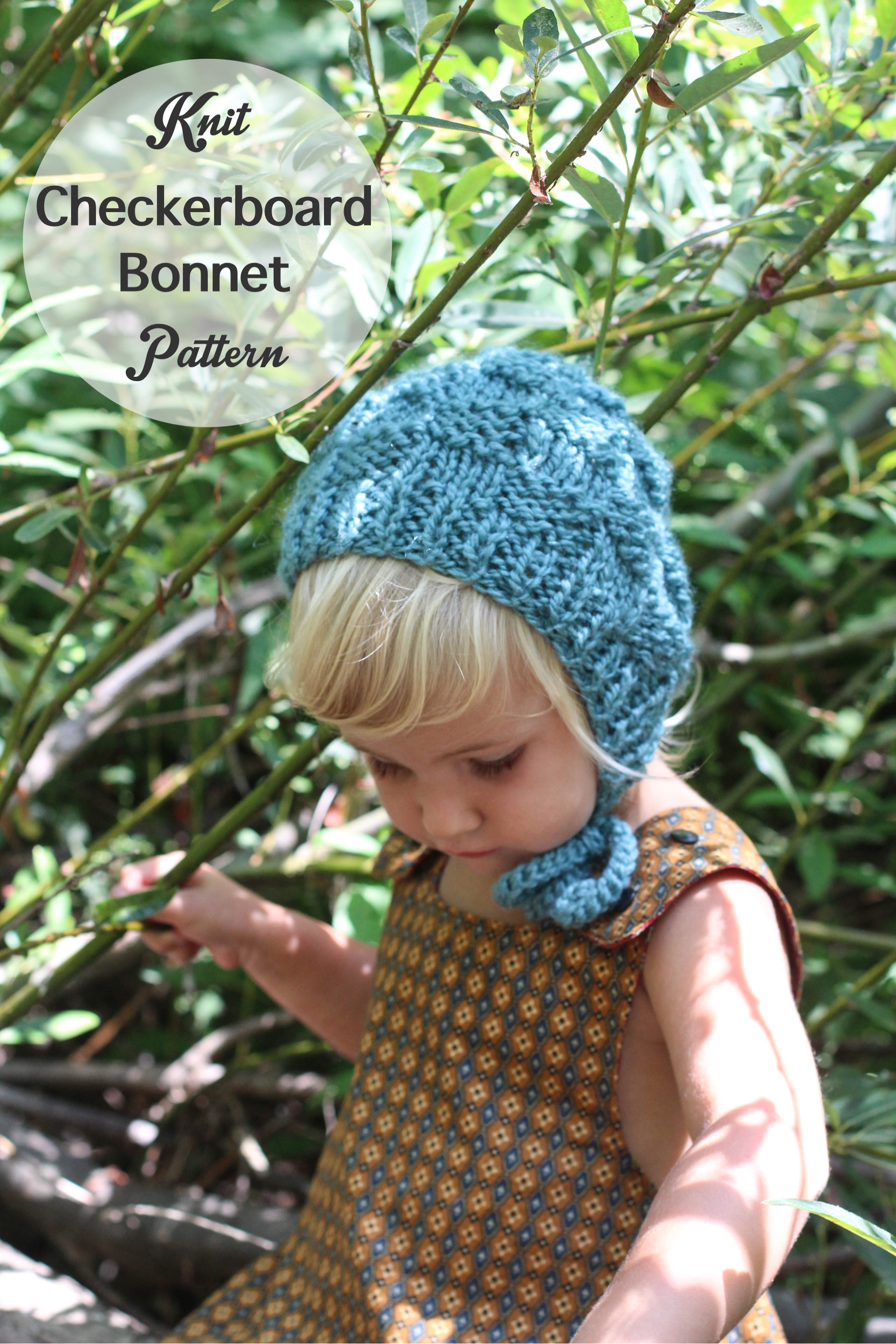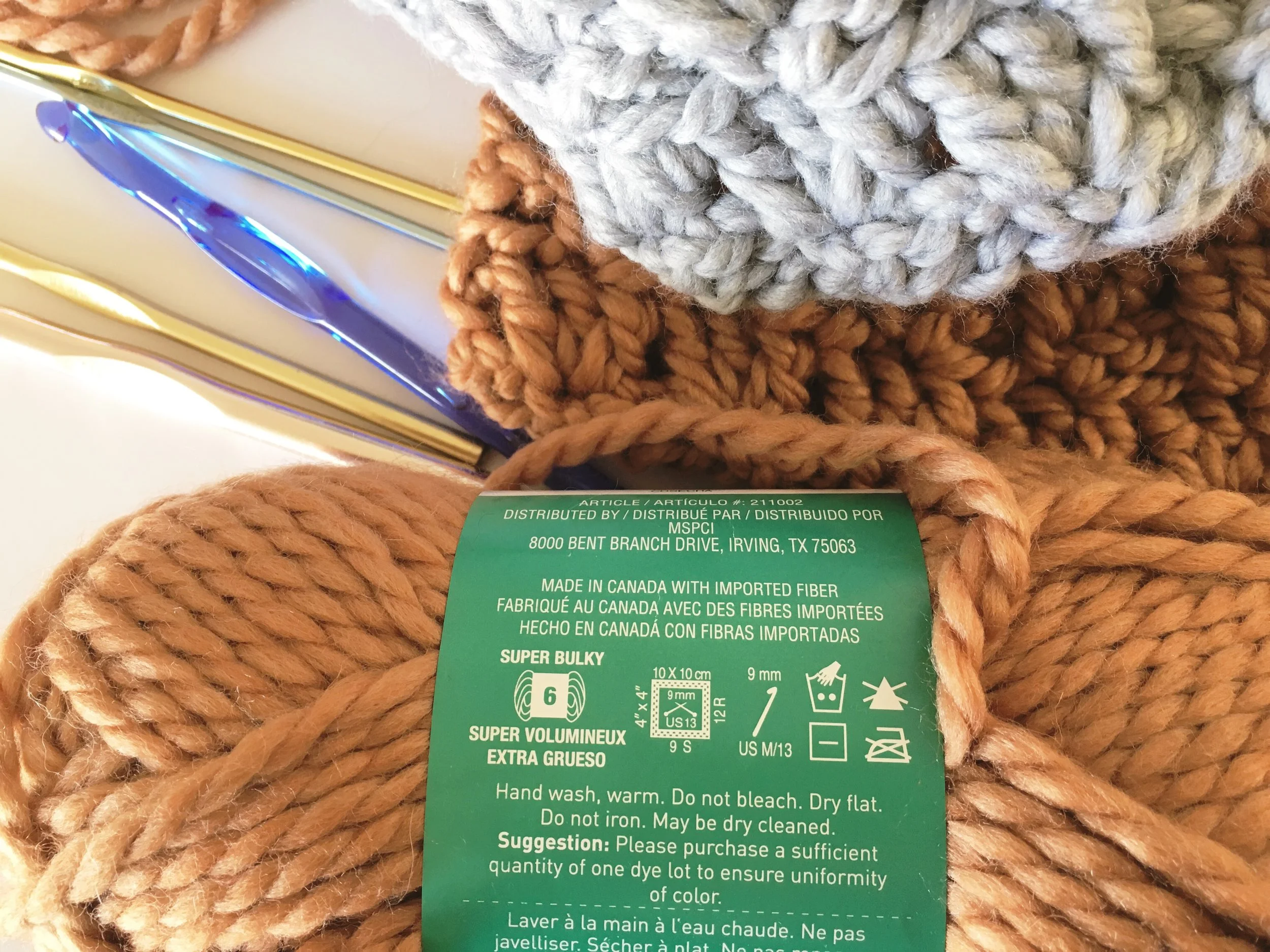It’s been a dream of mine for a few years now to have a collection of patterns available for you. This is just the beginning, because in my dream, there’s going to be a lot more where this came from!
Here is a round-up of the baby hat patterns I’ve made this last year and I’ve been so thankful for the wonderful response from all the people who have bought and made these patterns with great success!
Both knit and crochet patterns are available as well as FREE patterns and lessons to get you started!
Crochet Baby Bonnet Patterns
Heirloom Bonnet Crochet Pattern
This simple Heirloom Crochet Bonnet is a great beginning bonnet pattern. Mostly made with single crochet stitches and an easy to read pattern. I highly suggest using Magnolia and Oak Fibers Baby Alpaca yarn, once you do, you’ll never want to crochet with anything else! See this blog post for more details: Simple Crochet Baby Bonnet Pattern Blog post.
Crochet Shell Pixie Bonnet Pattern
Any child who wears bonnets definantly needs a pixie bonnet in their collection! This Crochet Pixie Bonnet pattern is crocheted with a shell stitch that creates a beautiful texture. See this blog post for more details on this pattern: Make Your Own Crochet Baby Pixie Bonnet blog post.
Free Crochet Dishcloth Pattern
For those of you who really want to make one of these crochet bonnets, but need to learn still, or want an easier project to warm up with, then grab this FREE Crochet Dishcloth Pattern, and visit my Blue Corduroy Crochet Lessons Series. You CAN do this!
I find that I equally love knitting and crocheting. Anything with yarn, people! But I’m well aware that many of you prefer one to the other, or have only learned one so far. For those of you who are knitters…
Knit Baby Bonnet Patterns
Knit Garden Bonnet Pattern
Bonnets are so quick to knit up that they are the perfect project for learning new stitches and techniques. This sweet Garden Baby Bonnet uses a technique called stranded colorwork, where you use two strands of different colored yarn to create a color design. See this blog post for more details: The Garden Lattice Knit Baby Bonnet Pattern.
Knit Checkerboard Bonnet Pattern
Knitting is really just different combinations of Knits and Purls, right? Well this Checkerboard Knit Baby Bonnet Pattern uses knits and purls to create a classic checkerboard texture. For more details you can read: Knit Baby Bonnet Pattern :: A Chunky Checkerboard blog post.
Free Knit Scarf Pattern
Need to warm up your knitting needles? This FREE Scarf Pattern is a great way to get your groove back, and learn a simple new stitch in the process. Complete with video tutorial to help you every step of the way.
I truly hope at least one of these patterns gets you excited and motivated to CREATE! When you finish your project, I’d love to see it! You can tag me on Instagram @emily_bluecorduroy.
Sign up for my newsletter and get %15 off your next purchase in my shop, including patterns! And be the first to know when new patterns and products are released.
xo Emily









